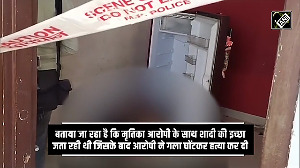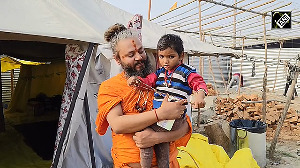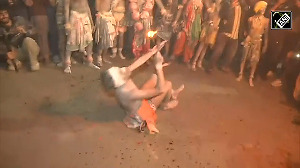Groups of tourists on trekking expeditions, people crowding at eating joints, devotees flocking shrines -- life in cloudburst devastated Leh district is gradually limping back to normal. As you enter the Changspa village, the scenes are a contrast to the death and devastation visible a week ago after cloudburst and flashfloods hit the region on August 5.
Foreigners can be seen either cycling down or catching a quick bite at the many cafes along the narrow road. Tucked in between is the Jewish House, where an Israeli group was busy preparing its lunch. Following the calamity that left about 200 dead, foreign tourists had joined hands with armed forces personnel and locals in the relief operations, clearing the sludge that had covered the vast land. Like thousands of others, Andrea, a French national, came here to test himself on high-altitude trekking trails. "I was told about this place by a friend of mine who had come here earlier. Had it not been for the floods, the experience would have been different," he said. A few steps away from the Jewish House is the German
The numerous shops offering gear for adventure sports like trekking, rafting and camping too are back in business. The centuries-old Gurudwara Pathar Sahib is again flocked by devotees. A major tourist destination, the Gurudwara, which is about 25 kms from Leh, has been cleaned of about four feet of sludge and that flowed down the hills following the cloud burst. Carrying out a massive relief and rescue operation, the Army reopened the crucial Leh-Manali route on Saturday and was rebuilding several bridges.








 © 2025
© 2025